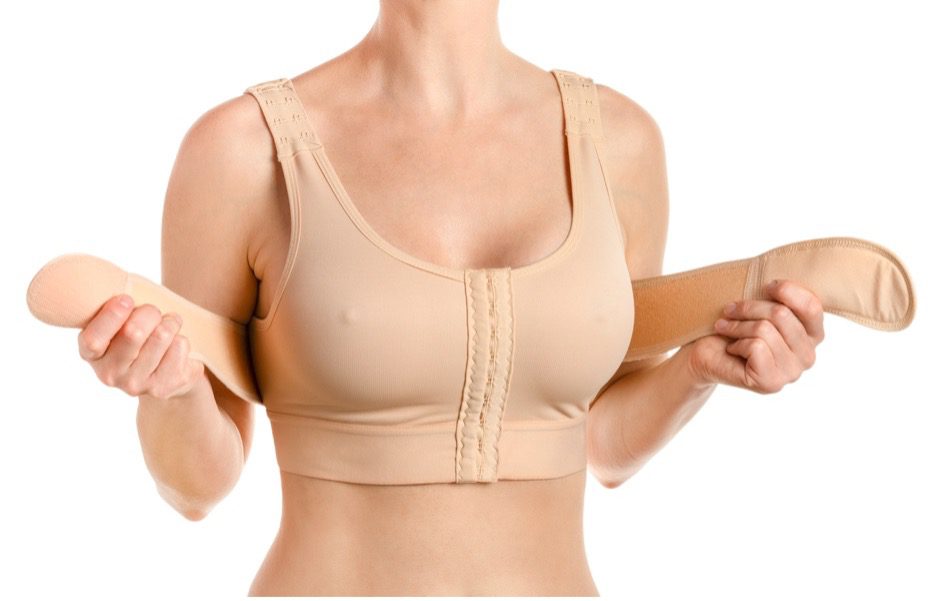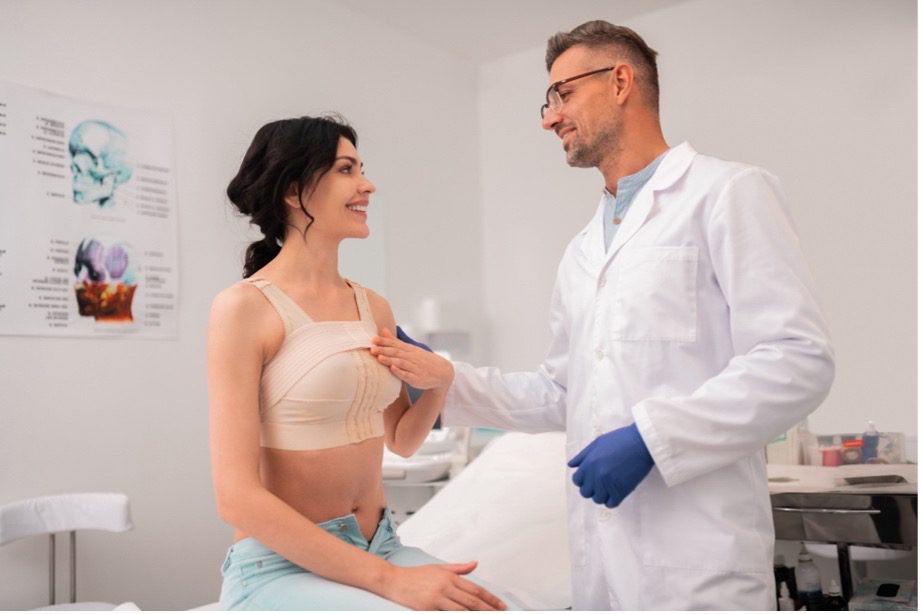
Undergoing breast reduction surgery is an important decision behind which there’s often the desire to significantly improve physical discomfort or simply improve your quality of life for other reasons. Whether you’ve just had the surgery or are planning for it, it’s important to bear in mind that, just like for any other surgical procedure, recovery is essential for reducing the risk of post-operative complications and helping you get the best cosmetic outcome. In this phase, understanding what to expect and when to resume your daily activities provides emotional reassurance and alleviates potential post-operation anxiety.
Using our extensive experience, we’ve provided a clear roadmap that highlights the challenges and milestones you’ll face across the first six weeks.

Week 1 – Immediate Post-Operation Care: Taking It Easy
Once you’ve undergone breast reduction, the first week might be the toughest. It’s all about taking it easy, resting up, and giving your body the time to heal.
Once you’re back at home following the operation, the healing process has already begun. It’s important that you follow the specific instructions your surgeon will provide you with on how to best care for your incisions. There will be dressings in place, and you will likely have a supportive compression bra to wear. The bra is measured and provided specifically for you and should be worn as instructed by the surgeon, making sure the elasticated band around the chest is pulled down to avoid irritation of the incisions. It is important to keep the area clean and dry to avoid infections. Do not disturb the dressings and keep them dry till you are seen a week following surgery by the nurse or doctor. Avoid using special ointments, such as nourishing creams, lotions or dressings, to prevent the formation of scars, all of which, in the initial phase of healing, can contribute to infection.
Breast reduction surgery is not normally a very painful procedure, and whilst some pain and swelling are naturally common during this period, your doctor will prescribe painkillers to help you manage the discomfort. Take these medications as directed, and don’t push yourself too hard to avoid side effects. Any pain or discomfort should normally settle within the first few days. Should you spot any unusual symptoms like excessive swelling or redness, particularly only on one side, then contact your doctor.
Remember to sleep with your head elevated—a couple of pillows should suffice to keep you comfortable and supported. The aim is to reduce swelling and avoid any movements that strain your chest area. We know it might be uncomfortable, but patience is key during this stage!
Another important piece of advice is to avoid lifting or carrying anything heavy and to take care when lifting your arms above your shoulders.
Again, in this first phase, the goal is to rest as much as possible!
Nutrition and Hydration Tips
Don’t underestimate that what you eat and drink is central to how well you heal. Adopt a balanced diet rich in vitamins and minerals to support your body’s repair processes, prioritising foods high in protein, vitamin C, and zinc, which favour wound healing. Drink plenty of water to stay hydrated; that’ll give your skin extra power to restore. Plenty of dietary fibre, fruit, and vegetables will help reduce the side effects of the drugs and painkillers that can cause constipation. On occasion, laxatives will be prescribed to help.
Also, stay away from alcohol and smoking, as these can interfere with the healing process and increase the risk of complications, and drink caffeinated beverages in moderation. Smoking, in particular, is associated with significant wound breakdown and healing complications.

Week 2 – Staying Comfortable: Tips for Managing Pain
At the end of the first week/start of the second week, your dressings will be removed, and incision lines will all be cleaned with saline or antiseptic solution. The scars will then be taped by the nurse or doctor for a further week, and you will be shown how to replace this tape as required. During the second week, you’ll notice a decrease in swelling, but you still need to remain cautious. You should no longer be on painkillers, and the key is to listen to your body: if there’s discomfort, you must take it easy. Make sure you continue to wear your surgical bra as instructed to benefit from necessary support; should you spot any unusual symptoms like excessive swelling or redness, contact your doctor.
Activities and Movement
While you should avoid demanding activities, we recommend gentle movements to promote blood circulation and recovery. Simple and light activities like short walks that do not strain your chest or arms are encouraged, while you should stay away from actions like lifting heavy objects, including groceries and even small children. As a general guide with any activities, it is important as a guide to make sure you avoid getting sweaty, as this can irritate the wounds and also lead to infection. This advice will remain for about 4 weeks following surgery.

Week 3 – Easing Back into Your Routine, Gradually
By the third week, you should be feeling much better and resume your normal activities. Don’t rush things, though! Remember to take it slowly and be mindful of how you feel, especially if you go back to work. Take breaks as needed, and keep listening to your body. If you experience pain or discomfort, it means you need more rest. The best thing to do is to ease back into your routine gradually rather than overdo it and set back your recovery.
Wound Care and Follow-Up Appointments
The wounds should have healed over but on occasion, small areas can still be slow to heal over and still require dressings. If appropriate, continue applying treatment creams and changing dressings as prescribed by the nurse or doctor. Keep the area clean and monitor it for any signs of infection.
In our 5 top tips for preparing for cosmetic surgery, we highlight how you must attend all scheduled follow-up appointments with your surgeon. These visits are vital for assessing your progress and addressing any concerns you may have! Your doctor will check your incisions, remove any remaining stitches, and tell you how to care for your scars during the healing process.

Week 4 – Slowly Incorporating Gentle Exercises
It’s now the fourth week. You have the choice to start with light exercises, such as gentle stretching and low-impact activities, including walking. These exercises improve your flexibility and circulation without putting too much strain on your body, which is still recovering. If you experience any discomfort, stop any activity that causes it.
Your surgeon may recommend specific exercises to improve mobility, prevent stiffness, and help you gradually build up your strength and resistance.
Embracing a Healthy Lifestyle
Maintaining a healthy weight and staying active will benefit the final results of your surgery! Remember, recovery is a gradual process, and it’s important to celebrate small milestones along the way. By adopting a balanced diet and exercising in a safe and controlled manner, you’re setting yourself up for long-term success.

Week 5 – Tracking Your Healing Journey with Follow-Up Care
By the fifth week, you’ll be well on your way to recovery! However, you must keep monitoring your progress. Pay attention to how your body feels and how your incisions are healing. Take note of any lingering pain or discomfort and discuss these with your doctor during follow-up appointments. As scar care becomes vital at this stage, here are a few tips to manage it effectively:
- Use silicone sheets or tape as effective treatments; they will be directed by your doctor.
- Protect your scars from the sun and its UV rays.
- Track your healing journey to make sure you’re doing it right.
- Attend follow-up care appointments to assess and address any concerns.
Week 6 – Back to exercise and normal routine with longer-term scar care
Up to this point, if there have been no problems, you are now free to commence all your normal physical activities and exercise. Scar management is key for the next six months as healing enters the maturation phase, which can take up to 18-24 months for scars to settle fully. For the next few months, scars can remain red, lumpy, and raised. Over time, they can also stretch but tend to soften and fade. Following the advice from your doctor on using silicone tape/sheeting is very important. Any scar-related concerns you have should be discussed with your doctor.
Remember, staying connected with your healthcare team means you have the guidance you need for a complete and successful recovery!
 Need Help with Your Recovery? The Aesthetic Skin Clinic Can Help
Need Help with Your Recovery? The Aesthetic Skin Clinic Can Help
At ASC, our team of highly qualified, expert medical professionals is dedicated to guaranteeing your complete well-being by providing support throughout your recovery journey. From the initial consultation to post-op care, we are here to ensure you have the best possible experience and achieve optimal healing. If you’re interested in breast reduction in Jersey and Guernsey, contact us.
You will learn more about our surgical treatments and how we can assist you before, during, and after your breast reduction surgery. With ASC, you’re not alone in this journey!






 Need Help with Your Recovery? The Aesthetic Skin Clinic Can Help
Need Help with Your Recovery? The Aesthetic Skin Clinic Can Help



